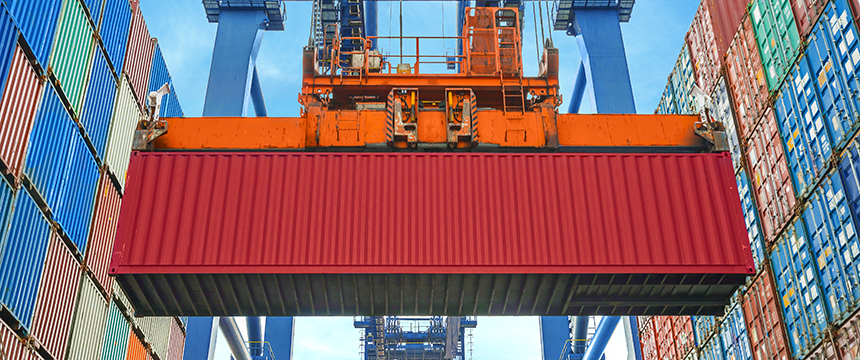What Every Importer Should Know About . . . Customs Compliance
A publication in Foley’s International Trade, Enforcement & Compliance series.

The inaugural article in our International Trade, Enforcement & Compliance regulatory series, “What Every Multinational Organization Should Know About . . . Customs,” provided a list of Customs red flags and errors that we commonly see at major importers. Since then, we have received requests for a companion customs compliance checklist to help importers evaluate the strength of their customs compliance program and to provide guidance for companies looking to benchmark them against suggested best practices. To help with this task, we have put together this follow-up Customs compliance guidance.
Implementing Customs Compliance Best Practices
The existence of an effective compliance program is one of the first items tested by U.S. Customs and Border Protection (CBP) in an audit. A proactive review of the compliance program is the starting point for enhanced customs compliance and should start with the following:
- Determine the Scope of Imports. Pull an Automated Commercial Environment (ACE) report to determine all goods for which your organization and its affiliates act as the importer of record. Ensure that the report includes all affiliates that potentially act as an importer of record.
- Evaluate High-Risk Imports. Determine which imports are most likely to generate CBP scrutiny, including imports from China (high Section 301 tariffs), goods that are manufactured in third countries using significant Chinese-origin inputs (potential claims of circumvention of Section 301 duties), goods potentially falling under antidumping or countervailing duty orders (high potential additional tariffs), goods taking advantage of preferential tariff measures (free trade agreements, GSP preferences, use of Foreign Trade Zones, and so forth), and goods that rely on the First Sale Rule to minimize tariffs. Provide special scrutiny to such entries to ensure accuracy in the payment of all tariffs due.
- Conduct a Classification and Valuation Review. Importers should regularly review the items they commonly import and confirm the accuracy of HTS classifications. These classifications should be maintained in a tariff classification database that is available to customs brokers or any other party responsible for ensuring correct entry. Importers also should review the methodologies that are used to calculate the ad valorem value of entries, paying particular attention to transactions with affiliates and to whether the valuation includes all off-invoice items such as royalties and assists.
- Conduct an Antidumping and Countervailing Duties Product Review. The collection of full AD/CVD tariffs and the prevention of circumvention of the hundreds of AD/CVD orders currently in effect is a priority of CBP. Companies importing goods subject to these orders should carefully review their entries to ensure they are occurring in good order, with the payment of full duties as well as consistent declaration of the correct country of origin (entry status 3) and coverage by the orders.
- Confirm Proper Payment of Section 232 and Section 301 Duties. Given the high tariffs associated with Section 232 and Section 301, importers should carefully review their aluminum and steel imports and their imports from China, respectively, to ensure these imports are being properly recorded, including the payment of all tariffs due.
- Evaluate FTA Claims. Importers should review any FTA or duty preference program instructions to determine their accuracy. Common issues to confirm are whether the regional content requirements are met, whether required certificates of origin are at hand at the time of entry, and that all required documentation to support claimed free-trade preferences is maintained for the appropriate period of time.
- Updated Certificates of Origin. FTAs, including the USMCA, often impose a requirement to have Certificates of Origin for anticipated duty preference claims. If these Certificates of Origin are not in hand at the time of entry, then the entry is not eligible for duty preference, even if the rules of the FTA otherwise are met. Importers should work with their Customs brokers to ensure they have all required Certificates of Origin on hand and that they meet current FTA requirements (e.g., not using outdated NAFTA Certificates of Origin).
- Evaluate Tracking of Assists. Assists (the provision of manufacturing materials such as molds, tools, or dies) are required additions to value that often are forgotten because they do not appear on invoices. All importers who provide such materials to aid overseas production should have a system of properly tracking all assists and allocating them to the correct entries, which should be periodically checked to ensure its accurate operation.
- Evaluate Documentation and Recordkeeping Processes. Complete and accurate recordkeeping is vital for customs compliance and audit preparedness. Importers should confirm that they are maintaining records of all import and export transactions, including shipping documents, invoices, and correspondence; ensuring record retention for the required period; and implementing a document management system that allows for the efficient location of any requested records.
- Conduct Periodic Compliance Checks. On a regular basis, a designated employee should conduct post-entry confirmations of a sample of entries to ensure the accuracy of information being provided to CBP, as well as to mitigate any discovered errors. Once relevant documents (e.g., broker invoice, supplier invoice, Customs Form 7501 or 3461, bill of lading) have been obtained, the employee should confirm that the various documents contain consistent information and that all key elements have been accurately recorded (e.g., country of origin, classification, valuation, any applicable assists, all AD/CVD, Section 301, Section 232, or other special duties). Any needed corrections can be accomplished using the Post-Summary Corrections process, so long as less than 310 days have passed since the time of entry.
- Coordinate with Freight Forwarders and Customs Brokers. Importers should engage with their freight forwarders and customs brokers to determine whether Customs requirements are consistently followed and should coordinate required recordkeeping. Although it is acceptable to delegate responsibility for import responsibilities to third parties, from a CBP perspective the ultimate responsibility for the handling of entries is on the importer of record.
Evaluate Tariff-Saving Opportunities
Your organization should consider whether there are customs strategies that can minimize duties.
- Consider Holding Products in a Bonded Warehouse. Bonded warehouses are buildings or secured locations in which products with duties can be stored or altered without paying the duties for a maximum of five years. If the products are exported, destroyed under CBP supervision, or withdrawn without consumption in the United States, no duty is owed on the products.
- Duty Drawback. A duty drawback is a refund or remission of a customs duty, fee, or internal revenue tax previously imposed. The refunds occur when the product is exported from the United States or destroyed. This is a complex process, as it involves imports and exports and careful tracking of entries and exports, but for certain types of transactions it can offer real duty savings and the rebate of nearly all tariffs paid at the original time of entry.
- Foreign Trade Zone (FTZ). A foreign trade zone is a secured location in or near CBP ports where no tariffs apply while the product sits in the FTZ. The product can be stored, exhibited, assembled, manufactured, or processed in this zone without any duties being applied.
- Temporary Importation Under Bond. An importer may post a bond for twice the amount of the duties and then must export or destroy the imported items within a specified time or pay damages. Depending on the type of transaction, using a TIB may lead to duty savings.
- Use of First Sale Rule. Companies that import from China, in particular, are looking to use the First Sale Rule, which is a means by which the importer of record can use the lower price to the middleman purchaser in place of the price to the importer of record as a means of determining the entered value. Although this is a recognized tariff-saving measure, Customs has indicated that strict compliance with each of the exacting requirements is required to invoke the Rule.
Evaluate Customs Housekeeping Issues
Next, you should confirm that your organization has taken care of often-overlooked customs housekeeping issues.
- Sign up for ACE. Importers that have not signed up for ACE should do so promptly rather than relying on access to ACE by the company’s customs broker. Advantages include the elimination of paper entry summaries, decreased administrative costs, enhanced ACE report capabilities, and remote location filings for entry summaries.
- Request Census Bureau Data. The Export Administration Regulations (EAR) require that exporters maintain certain information regarding exports for a period of five years after the time of exportation. To help comply with this requirement, it is a good idea to request Census Bureau data for the prior 12 months once a year.
- Bond Sufficiency. CBP monitors the sufficiency of continuous entry bonds to determine if the bond covers likely import activity. CBP determinations of inadequacy can result in increases in the bond amount over a short period of time (15 days). Importers should review bond sufficiency regularly with Customs brokers, because failure to comply can result in CBP declaring the bond insufficient, thereby forcing the use of more expensive single-entry bonds.
- Listing Multiple Principals on the Same Bond. Companies should consider whether it makes sense to include multiple entities on the same bond. While doing so allows for bond savings, each entity is jointly and severally liable and responsible for paying any claim regardless of which entity is at fault. Any one of the entities can terminate the bond at any time, which can cause problems if the management of the bond is not coordinated.
- Customs Broker Powers of Attorney. Although it is common to grant a customs powers of attorney to customs brokers, these grants should be monitored to ensure they are accurate and there are no unnecessary legacy authorizations in place. Reviewing ACE data allows for the ready identification of all customs brokers who have made entries on behalf of an importer of record by reviewing the filer codes on the entries. Any unneeded powers of attorney should be revoked.
- Update Names and Addresses on File with CBP. CBP maintains an importer-of-record program that seeks to more closely monitor companies that import as a means of preventing fly-by-night importers who seek to evade duties (particularly antidumping and countervailing duties). CBP uses name and contact information from Form 5106 to communicate with importers. Importers should review the information on file with CBP to ensure the accuracy of all information and that it meets current importer tracking requirements.
- Manifest Confidential Treatment. Much of the information filed as part of the entry process is available for review by companies such as PIERS and Panjiva, which gather it together and sell it, including to competitors. By filing a government confidentiality request and keeping it up to date, importers can take steps to keep import data confidential.
- Trademark and Trade Name Protections. CBP has the ability to help bar entries that violate trademarks and trade names that are registered with the CBP. Companies that believe they are seeing infringing imports should consider taking steps to protect their intellectual property through the registration process or should consider whether seeking section 337 import protections is appropriate.
Conduct Training
All relevant personnel should receive periodic training on customs requirements. Relevant personnel to consider training include persons in charge of customs compliance, procurement personnel, and employees in the shipping/logistics departments. Some topics that training should cover include (1) how to classify goods, (2) how to interface with freight forwarders and customs brokers, (3) responsibilities of importers of record, (4) FTA/NAFTA responsibilities if preferences are being claimed, (5) how to determine country of origin, (6) recordkeeping responsibilities for imports and exports, and (7) screening responsibilities and other responsibilities when exporting.
How Can Foley Help Me Deal with Customs Compliance Issues?
Fill out our risk-assessment questionnaire, and our customs attorneys can help your organization assess its import-related risk. Click here to take the survey.

